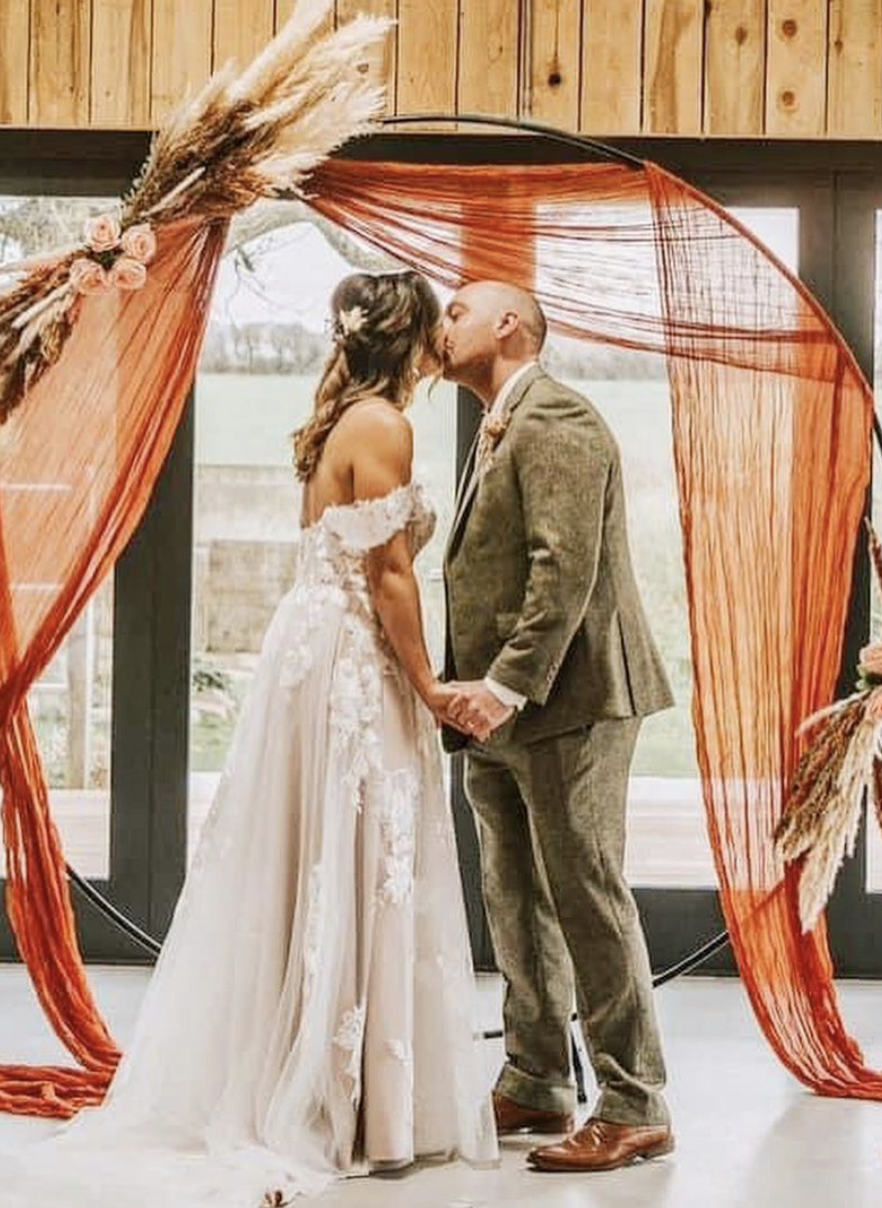17Jun
Plan for Alterations: Once you've found the dress of your dreams, it's time to ensure it fits you like a glove. Alterations are crucial for achieving the perfect fit and making minor adjustments to enhance comfort and style. Here's how to navigate the alteration process:
- Find a Skilled Seamstress or Tailor: Look for a professional who specialises in bridal alterations. Experience with wedding dresses is essential, as these garments often feature intricate details and delicate fabrics that require expert handling. Ask for recommendations from your bridal boutique or married friends who were satisfied with their alterations.
- Schedule Fittings in Advance: Plan your alteration appointments well in advance, especially if your wedding date is approaching. Seamstresses may have busy schedules, so book fittings as soon as possible to ensure availability. Aim for your first fitting about 2-3 months before the wedding, with additional fittings scheduled as needed.
- Communicate Clearly: During your fittings, communicate openly with your seamstress about your preferences and any concerns you may have. Be specific about the fit you desire, whether it's adjusting the hemline, taking in the waist, or altering the neckline. Bring along any accessories or undergarments you plan to wear on your wedding day to ensure proper fitting.
- Consider Customisations: Don't hesitate to request customisations to make the dress uniquely yours. From adding sleeves or straps to incorporating lace appliqués or beadwork, alterations can transform a dress to better suit your style and vision. However, keep in mind that extensive modifications may incur additional costs and require more time, so discuss these options with your seamstress beforehand.
- Plan for Multiple Fittings: Most brides require several fittings to achieve the perfect fit. Be prepared to make multiple trips to the seamstress for adjustments and fine-tuning. Schedule your final fitting closer to the wedding date to account for any changes in your body shape or weight.
- Budget for Alteration Costs: Alteration costs can vary depending on the complexity of the alterations needed. Factor these expenses into your overall wedding budget to avoid any surprises. While it may be tempting to cut costs by skimping on alterations, investing in proper fitting ensures you look and feel your best on your big day.
- Allow for Movement and Comfort: When fitting your dress, prioritise comfort and ease of movement. You'll be spending hours wearing your wedding dress, so it's essential that you can sit, walk, and dance comfortably. Your seamstress can make adjustments to ensure the dress fits snugly but allows for freedom of movement.
- Schedule a Final Fitting: Schedule a final fitting closer to your wedding date to ensure the dress fits perfectly. Use this opportunity to practice walking and sitting in your dress and make any last-minute adjustments if needed. After the final fitting, store your dress carefully in a breathable garment bag until the wedding day.

By following these tips and working closely with a skilled seamstress, you can ensure your wedding dress fits impeccably, allowing you to radiate confidence and beauty as you walk down the aisle.
By following these tips and working closely with a skilled seamstress, you can ensure your wedding dress fits impeccably, allowing you to radiate confidence and beauty as you walk down the aisle.
Comments